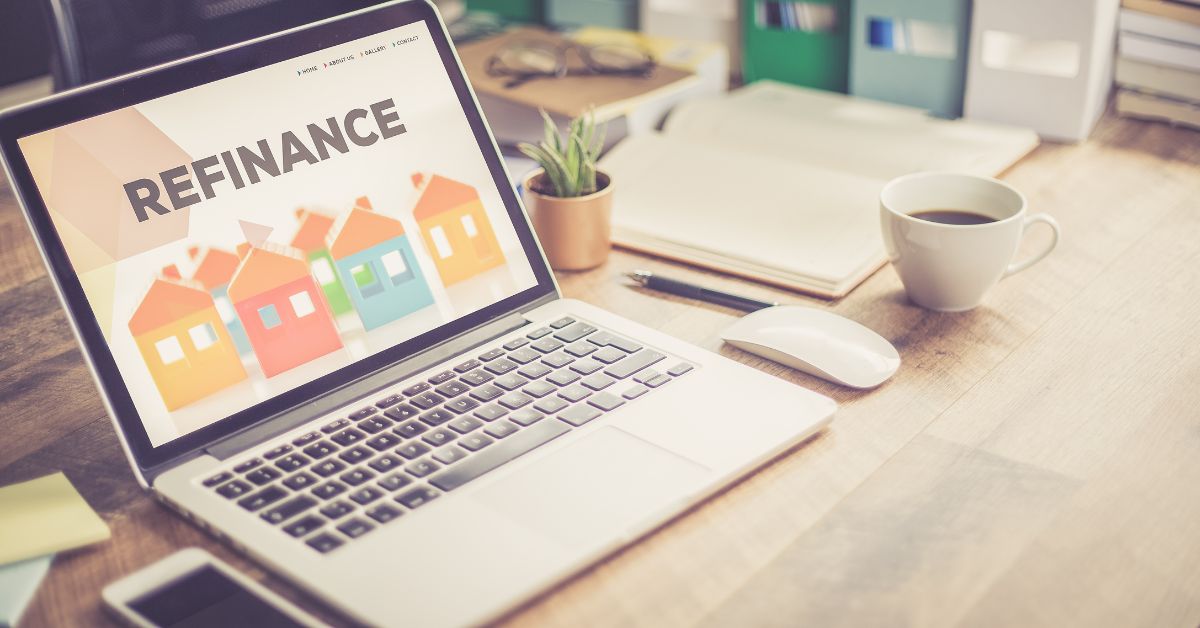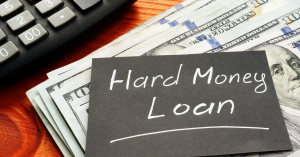If you’re new to the home-owning world, hearing lots of chatter about 2-1 buydown mortgages and refinancing might feel overwhelming. But don’t worry, I’m here to simplify things for you as someone well-versed in mortgage financing. A 2-1 buydown essentially means lower monthly mortgage payments at first – thanks to reduced interest rates in the initial years. Sounds tempting, right?
But before you jump on board, here’s another helpful tidbit – refinancing. While the word sounds complex, it just refers to adjusting your loan according to changing financial scenarios – potentially reducing your payments even further!
Think of it as an empowering tool for making informed decisions about what is likely one of your most significant investments—your home!
First Things First: What’s a Mortgage?
Today, we’ll discuss a little thing called the 2-1 buydown. But before we dive into this specific type of mortgage, you might be scratching your head and asking, “What exactly is a mortgage?” Let’s begin by unpacking that concept right now.
In its very essence, a mortgage is a special type of loan that has helped millions of homebuyers like you accomplish the dream of buying a house. Let’s break this idea down further:
The Heartbeat of Home Buying
You could think of your mortgage as the heartbeat that brings home buying to life. As the borrower, you enter into an agreement with your lender to borrow money.
This normally covers most—if not all—of the cost needed to purchase your cozy little corner.
- The Borrowing Concept: Unlike other forms of loans, which might be used on multiple things, mortgages are designed exclusively for real estate purchases.
- Secured Loan Status: What distinguishes a mortgage from other loans is its ‘secured’ status. Secured means there’s something backing up your loan, which usually translates to lower interest rates and simpler terms—definitely a win!
Playing The Interest Rate Game
A significant aspect within this framework is the concept called interest rate:
How does it work? In return for providing you with this loan service, lenders charge what we call an “interest” on top of what you borrowed. This affects how much they’ll earn, and it also influences how much and over how long you’re going to repay them.
This basic understanding arms you with helpful insights when making informed choices about possible mortgages available in today’s market.
Getting Familiar With the 2–1 Buydown

A 2-1 buydown is a unique kind of mortgage plan designed to make the process of buying a house more affordable at the outset. The “2-1” refers to how it lowers your interest rate for the first two years: in year one, it drops by two percentage points lower than your contracted rate; year two sees it dipping by one point; by year three, it reverts to the original rate.
The table below provides a concise annual breakdown of the interest rate changes experienced in a 2-1 buydown mortgage plan:
| Year | Interest Rate Change |
|---|---|
| First Year | -2% from contract rate |
| Second Year | -1% from contract rate |
| Third Year & Onwards | Contract rate |
How Does a 2-1 Temporary Buydown Affect Your First Two Years?
Amid the financial strain of moving costs and new home expenses in those starting years, a 2–1 temporary buydown often acts as a valuable financial buffer.
It offers the benefit of manageable monthly mortgage payments at first, allowing you to ease into budget adjustments before they gradually increase over time back to their original rates.
During the first two years, a 2-1 buydown allows you to pay lower monthly payments, affecting the loan amount by temporarily lowering the interest rate in this stage.
As you navigate this phase and consider your options for better loan terms, average closing costs for refinance can help steer more informed decisions about when a term renegotiation could be worth pursuing.
The Magic Word: Refinance!

Talking about this, we refer to renegotiating and replacing an existing mortgage with a new one. This replacement can even extend to non-traditional or unconventional loans as well; yes, you can refinance hard money loans. These are usually short-term, high-interest-rate loans used primarily in real estate deals.
The terms for these might be less favorable than those of a traditional mortgage; hence renegotiating these into more conventional terms could provide financial advantages too. There could be several reasons for this shift: lower available market interest rates than you currently have, changes in personal financial circumstances, or possibly shorter loan term lengths.
Knowing Your Interest Rate
Your defined interest rate on your mortgage directly influences how much you’ll repay overall. It also determines what portion of each payment will pay off capital against simply servicing accumulating interests.
Can You Refinance an Interest Rate Into a Rate Buydown?
Converting standard interest rates to buydowns can save costs. This is especially useful if projections indicate rising rates or lower commitments are needed during initial life cycle phases while preparing for growing economies.
And What About That Monthly Mortgage Payment?
Refinancing could alter monthly totals owed, likely through extended durations meaning less pay-out every month; however, total repaid sum might increase overall owing accrued interests over longer phases hence thorough cost-benefit analyses become quintessential before deciding whether this seems an apt choice indeed!
It’s crucial to remember that while, as a borrower, you’re performing this comprehensive cost-benefit analysis before doing this, the seller also holds a stake in this transaction.
Often, sellers might extend what’s known as “seller concessions”, covering part of the costs to make the deal more enticing for potential buyers. By doing so, sellers hope to increase their prospects of closing the sale and easing some financial burden on the buyer side.
The Relationship Between Buyer and Lender in the 2–1 Buydown Landscape

When it comes to home loans, especially something like a 2-1 buydown, understanding the dynamics between you—the buyer—and your lender is pivotal.
A Symbiotic Relationship
Let’s explore short notes about this unique alliance:
- As a Buyer: You play a dynamic role in this equation. Your aim? Secure an appealing loan deal with agreeable terms and manageable monthly payments, ideally through enticing options like buydowns.
- Your Lender: The institution or party willing to provide you with financial resources — to purchase your dream home. They’re all set to finance your venture in light of gaining some profit through interests.
Decoding 2-1 Buydown
Having witnessed the impact of interest rates, I can tell buydowns—especially a 2-1 version—creates its niche:
- Buyer’s Boon: For homeowners seeking initial relief as they adjust their budgets to accommodate mortgage repayments alongside other expenses, a 2–1 rate buydown could act as that exact lifeline.
- Seller Solutions: Also handy for sellers looking towards making property sales more attractive—it aids them in wooing potential buyers by offering lowered payable interest rates for those initial years.
Understanding these dynamics underscores how mutually beneficial arrangements can facilitate smoother sailing on the seas of homeownership!
Weighing Options: Traditional Mortgage Vs. Buy down Mortgage?
Conventional loans and mortgages feature rigid fixed structures throughout the duration, unfazed by external market dynamics, whereas buydowns provide solace for early adjusters to accommodate newcomers, initially letting them step onto property space easier than otherwise.
Refinancing a home mortgage and a 2-1 buydown involve replacing an existing mortgage with a new one. However, the terms and conditions of the new mortgage will differ depending on the type of mortgage.
Comparing Traditional and 2-1 Buydown
Traditional Mortgage
- Initial Payments (First Year): Fixed payment based on your agreed interest rate.
- Mid-Term Payments (Second Year): Still a fixed payment since your interest rate remains the same.
- Later Payments (Then Onwards): You continue to make fixed payments based on your initial agreed interest rate.
2-1 Buydown
- Initial Payments (First Year): Lowered payments due to reduced interest by two percentage points than the original contracted mortgage rate.
- Mid-Term Payments (Second Year): Slightly higher than the first year as your lowered rate increases by one point closer to the original agreement.
- Later Payments (Then onwards): Normal or fixed payments return, now aligned with your originally contracted mortgage rates.
Making the Most Out of Your Refinance Option
Being aware of some terms, especially insights like what is a good credit score to refinance a home, can yield significant benefits. With strong credit standing on your side, you stand a better chance of securing more attractive rates. This knowledge acts as a compass in gauging the right timing- helping achieve promising returns from lower interest rates, particularly during the initial stages of your new mortgage agreement.
Decoding Terms Into Actionable Steps
Understanding the proposed changes is an important area to dig into. Essentially, this involves comparing potential savings amounts with existing commitments to simplify decision-making aspects all around, helping to distinguish true value propositions from arguably hidden details layered beneath the top coat of contractual claims.
Dissecting the actual savings proportions is a way forward for evaluating the feasibility thereof with recourse to agreed-upon terms, optionally.
Guiding Towards Financial Success

Having successfully guided sellers and buyers through mortgage processes over the years, I’ve observed one common theme- understanding the fundamental aspects of choosing the right financing option is as significant as selecting your dream home.
The fact remains it’s not just about investing in a physical asset but cultivating dreams and transforming a house into that warm and much-desired home you seek. Keeping finances on track catapults you towards achieving this goal. It welcomes comfort into your doorsteps while shaping future finances to align with your life milestones!
With such understanding, informed decision-making becomes second nature – putting advanced strides toward envisioned outcomes.
Frequently Asked Questions About 2-1 Buydown Refinancing
Can you refinance a buydown loan?
Yes, you can, if the conditions are right. However, how much benefit you derive depends on various factors such as the current state of the market or even individual details like interest rates and term length. Each refinancing offer should be evaluated carefully with its potential costs and benefits before deciding.
What are the disadvantages of a 2-1 buydown?
A primary disadvantage of a 2-1 buydown could be its higher long-term cost. While it offers low-interest rates in its initial stages to attract borrowers, you may pay more over time once your interest rate reverts to its original numbers after two years.
What are the rules for a 2–1 buydown?
The principal regulations for executing a 2-1 Buydown comprise adhering to its designed structure: where initially agreed high-interest rate undergoes reductions by two points in year one and one point decrease in year two—post which it returns to original contracted figures from third year onwards.






